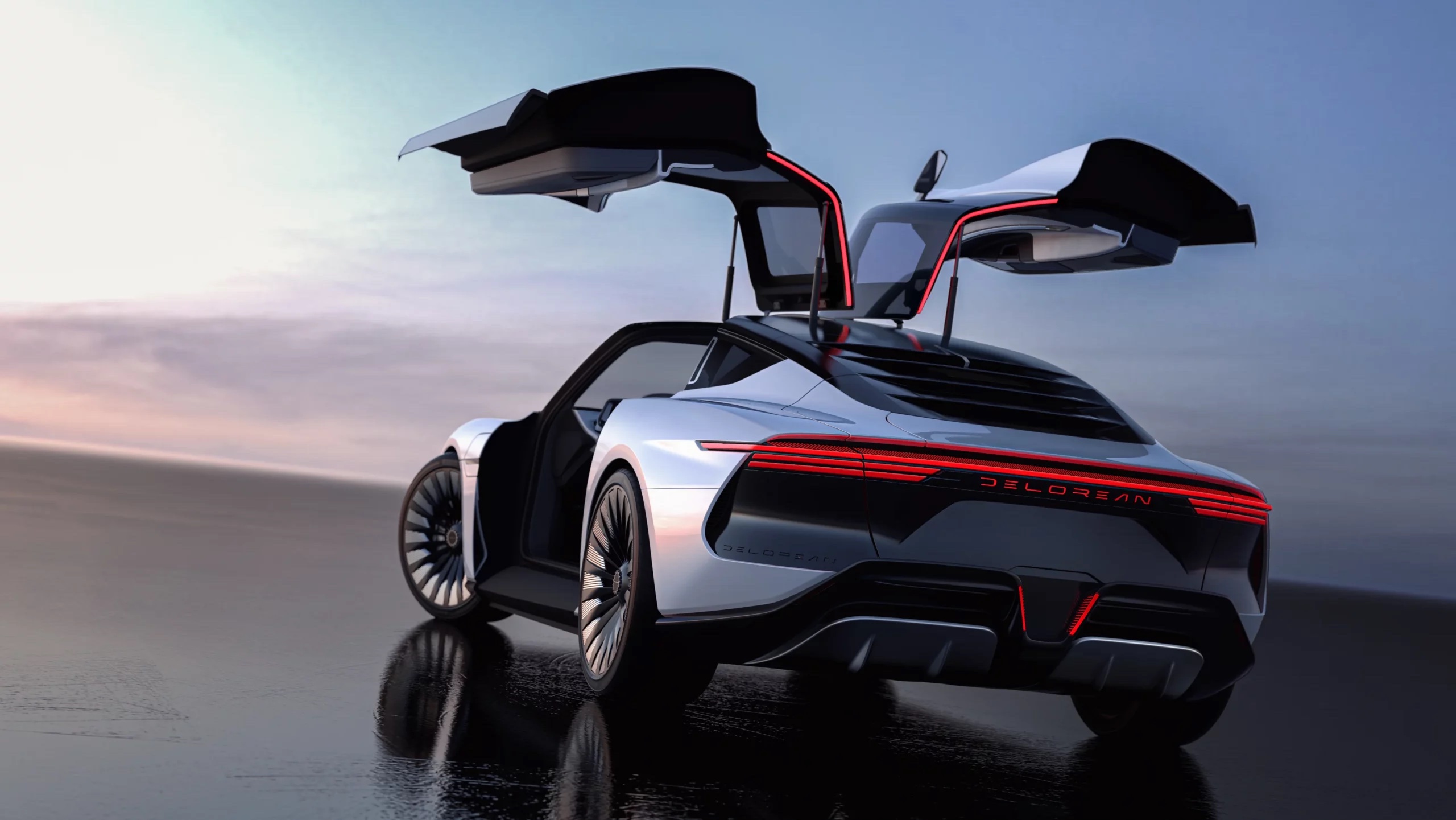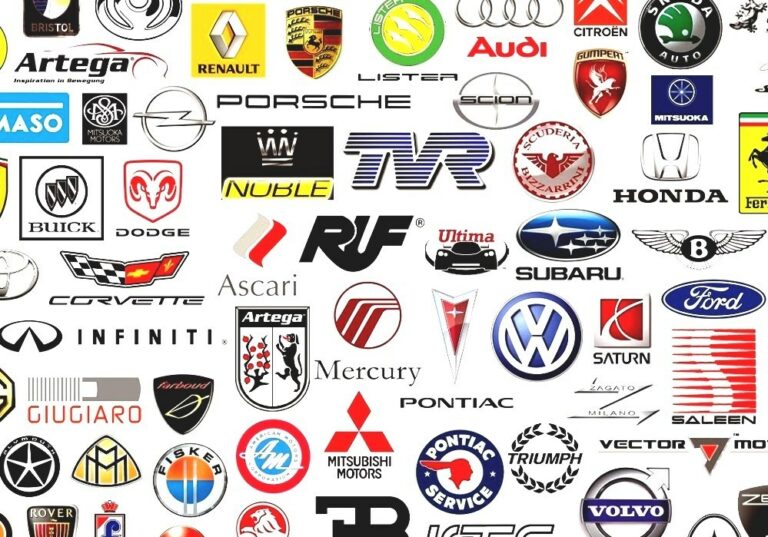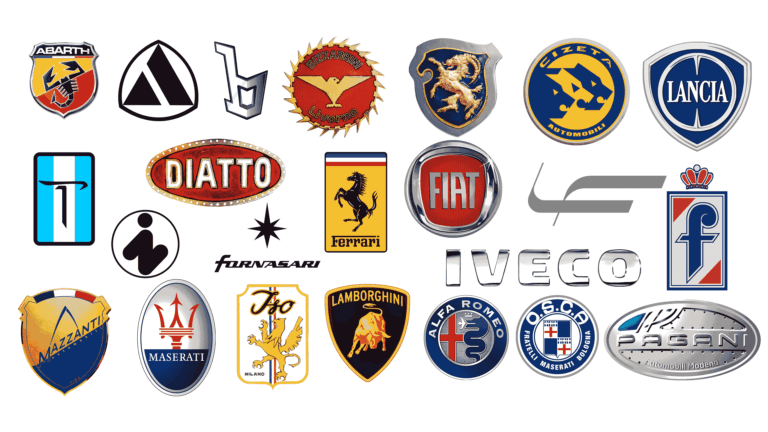Car Brake Brands: A Comprehensive Guide to Stopping Power and Safety
Car Brake Brands: A Comprehensive Guide to Stopping Power and Safety cars.truckstrend.com
The ability to stop your vehicle safely and reliably is paramount. While often overlooked until a problem arises, the braking system is arguably the most critical safety feature in any car. At its heart lies a complex interplay of components, each designed to convert kinetic energy into thermal energy, slowing your vehicle down. And just as engines differ, so too do the manufacturers of these vital components. Understanding Car Brake Brands is not merely about recognizing logos; it’s about discerning quality, performance characteristics, and suitability for your specific driving needs, ultimately ensuring your safety and the longevity of your vehicle.
This comprehensive guide will delve into the world of car brake brands, exploring what sets them apart, how to choose the right ones, and what considerations are essential for optimal braking performance.
Car Brake Brands: A Comprehensive Guide to Stopping Power and Safety
Understanding the Anatomy of Your Brakes: More Than Just Pads
Before we dive into specific brands, it’s crucial to understand the main components of a typical disc brake system, as most major brands specialize in one or more of these:
- Brake Pads: These are the friction material that presses against the rotor. They are designed to wear down over time and come in various compositions (ceramic, semi-metallic, organic).
- Brake Rotors (Discs): These are the metal discs that rotate with the wheel. The brake pads clamp onto them to create friction. Rotors dissipate heat and come in solid, vented, drilled, or slotted designs.
- Brake Calipers: These house the brake pads and pistons. When you press the brake pedal, hydraulic pressure forces the pistons to squeeze the pads against the rotors.
- Brake Fluid: A hydraulic fluid that transmits the force from your brake pedal to the calipers.
- Brake Lines: The conduits through which brake fluid flows.

Each of these components plays a crucial role, and the quality of their materials and manufacturing, often dictated by the brand, directly impacts your vehicle’s stopping power, feel, and durability.
Why Your Choice of Brake Brand Matters: Quality, Performance, and Safety
Selecting the right brake brand is far more important than many realize. It’s not just about a part fitting your car; it’s about performance under pressure, consistency, noise levels, and longevity. Here’s why brand choice is critical:
- Safety: Premium brands invest heavily in research, development, and testing to ensure their products meet or exceed safety standards. Inferior brakes can lead to longer stopping distances, brake fade (loss of braking power due to overheating), or premature failure.
- Performance: Different brands cater to different performance needs. An OEM (Original Equipment Manufacturer) replacement might be perfect for daily driving, while a high-performance brand is essential for track use or heavy towing.
- Durability and Longevity: High-quality materials and precise manufacturing mean parts last longer, reducing the frequency and cost of replacements. Cheap brakes might save money upfront but cost more in the long run.
- Driving Comfort: Some brands excel at producing brakes that minimize noise (squealing, grinding) and brake dust, leading to a more pleasant driving experience and cleaner wheels.
- Vehicle Compatibility: Reputable brands design their products to exact OEM specifications, ensuring a perfect fit and optimal performance for specific vehicle models.


Key Factors When Choosing Car Brake Brands
Navigating the multitude of brake brands can be daunting. Consider these factors to narrow down your options:
- Your Driving Style and Vehicle Application:
- Daily Commuter: You’ll prioritize quiet operation, low dust, and good longevity. OEM-style replacement pads and rotors are usually sufficient.
- Performance Driving/Track Use: You need maximum stopping power, excellent heat dissipation, and resistance to fade. Performance-oriented pads (e.g., ceramic or specialized semi-metallic) and drilled/slotted rotors are recommended.
- Heavy Hauling/Towing: Your brakes experience extreme loads. Look for brands offering heavy-duty or truck-specific brake kits designed for increased thermal capacity and stopping power.
- Off-Roading: Durability and resistance to contaminants (mud, water) are key.
- Brake Pad Material Composition:
- Organic Non-Asbestos (NAO): Quiet, low dust, gentle on rotors. Best for light-duty, everyday driving.
- Semi-Metallic: Good stopping power across various temperatures, excellent heat dissipation. Can be noisier and produce more dust. Common for many modern vehicles.
- Ceramic: Very quiet, extremely low dust, excellent cold stopping power, good fade resistance. Often found on luxury and performance vehicles. Generally more expensive.
- Rotor Design:
- Smooth/Blanks: Standard OEM replacement. Quiet and effective for most uses.
- Vented: (Most modern cars) Allows air to circulate, aiding heat dissipation.
- Drilled: Improves initial bite, helps dissipate heat and gases, looks sporty. Can be prone to cracking under extreme stress.
- Slotted: Sweeps away gasses and debris, improves wet weather performance, and offers a good bite. Less prone to cracking than drilled rotors.
- Drilled & Slotted: Combines benefits, often found in performance applications.
- Budget vs. Value: While it’s tempting to go for the cheapest option, remember that brakes are a safety component. Investing in a reputable brand often means better long-term value, fewer issues, and superior safety.
- Noise and Dust Sensitivity: If you despise brake squeal or want spotless wheels, ceramic pads from a reputable brand are often the best choice.
Prominent Car Brake Brands: Who’s Who in Stopping Power
The market for brake components is vast, with many brands specializing in different niches. Here are some of the most prominent and respected names:
OEM & Premium Aftermarket Brands (Often Suppliers to Car Manufacturers)
- Brembo: Synonymous with high-performance braking. Italian-made, known for their iconic red calipers and exceptional stopping power. Found on supercars, high-performance sports cars, and luxury vehicles. They also offer excellent aftermarket upgrade kits.
- Akebono: A leading Japanese manufacturer, renowned for their quiet, low-dust ceramic brake pads. Often an OEM supplier for Asian and North American vehicles, providing a smooth and comfortable braking experience ideal for daily drivers and luxury cars.
- Bosch: A German engineering powerhouse, Bosch produces a wide range of automotive components, including high-quality brake pads, rotors, and hydraulics. Known for their reliability, durability, and extensive OEM supply.
- ATE (Alfred Teves GmbH): A German brand under Continental AG, ATE specializes in hydraulic brake systems and components. They are a major OEM supplier, known for their high-quality brake fluid, calipers, and performance-oriented rotors and pads.
- TRW: Another brand under ZF Friedrichshafen, TRW is a major global supplier of braking, steering, and suspension systems. They offer a comprehensive range of OEM-quality brake pads, rotors, and calipers for the aftermarket, known for their reliability and wide vehicle coverage.
- Zimmerman: A German manufacturer specializing in high-quality brake discs and drums. They are known for their OEM-quality replacements and also offer drilled/perforated rotors for enhanced performance and aesthetics.
Performance & Enthusiast Aftermarket Brands
- EBC Brakes: A British company famous for its color-coded brake pads (Greenstuff, Redstuff, Yellowstuff, Bluestuff) and performance rotors. They offer a range of products tailored for everything from daily driving upgrades to serious track use, known for their strong initial bite and fade resistance.
- Hawk Performance: A North American brand focused squarely on performance. They offer a variety of brake pad compounds (HPS, HP Plus, DTC) designed for street performance, autocross, and racing. Known for aggressive bite and high-temperature stability.
- Power Stop: Specializing in complete brake kits (pads and rotors), Power Stop offers options for daily drivers, trucks, towing, and performance applications. They are known for their drilled and slotted rotors combined with ceramic or carbon-fiber ceramic pads, offering a noticeable upgrade over stock.
- StopTech: A leading brand in high-performance brake systems, StopTech offers big brake kits, performance rotors (slotted, drilled), and pads. They are designed for serious enthusiasts and track users seeking superior heat management and consistent performance.
Value & Everyday Aftermarket Brands
- Raybestos: A long-standing American brand offering a wide range of brake components for various vehicle types. Known for providing reliable, affordable OEM-replacement quality parts suitable for everyday driving.
- Wagner: Another well-established American brand, Wagner provides a broad selection of brake pads (including ceramic options), rotors, and shoes. They focus on delivering OE-style fit, form, and function at competitive prices.
- Centric Parts: A large supplier of aftermarket brake and chassis components. Centric offers a vast catalog including C-Tek (value-oriented), Posi Quiet (premium pads), and StopTech (performance) lines, catering to nearly every need and budget.
How to Choose the Right Brake Brand for You
- Assess Your Vehicle and Driving Habits: Are you driving a compact sedan for commuting, a heavy-duty truck for work, or a sports car for weekend thrills?
- Define Your Priorities: Is it ultimate stopping power, quiet operation, low dust, long life, or budget-friendliness?
- Research Vehicle-Specific Recommendations: Many car forums and enthusiast communities have discussions about which brake brands perform best for specific car models.
- Consider Kits vs. Individual Components: Many brands offer complete pad and rotor kits which are often more cost-effective and ensure component compatibility.
- Consult a Trusted Mechanic: They can provide expert advice based on your vehicle’s condition, your driving habits, and their experience with different brands.
- Don’t Skimp on Safety: While budget is a factor, avoid no-name, ultra-cheap brands. The small savings are not worth the potential safety risks.
Installation and Maintenance Considerations
Even the best brake components won’t perform optimally if not installed correctly or maintained.
- Professional Installation: Unless you are an experienced DIY mechanic, brake component replacement is best left to professionals. Proper torque, lubrication, and bleeding are crucial.
- Break-In (Bedding-In) Procedure: New brake pads and rotors require a specific "bedding-in" process to transfer a layer of pad material onto the rotor surface, ensuring optimal performance and preventing noise/vibration. Follow the manufacturer’s instructions.
- Matching Components: For best results, use pads and rotors designed to work together, ideally from the same brand or a reputable matched kit.
- Regular Inspection: Have your brakes inspected regularly as part of your vehicle’s maintenance schedule. Look for signs of wear, uneven wear, cracks, or fluid leaks.
Common Challenges and Solutions
- Brake Fade: Loss of stopping power due to overheating.
- Solution: Upgrade to performance-oriented pads and rotors (e.g., ceramic, semi-metallic, drilled/slotted) from brands like EBC, Hawk, or Power Stop, which are designed for better heat dissipation.
- Brake Noise (Squealing/Grinding): Can be caused by worn pads, improper installation, cheap materials, or glazing.
- Solution: Ensure proper installation with shims and lubricant. Consider ceramic pads from Akebono or Bosch for quiet operation. If grinding, replace worn pads immediately.
- Excessive Brake Dust: Common with semi-metallic pads.
- Solution: Switch to ceramic pads (Akebono, Bosch, many Power Stop kits) known for very low dust production.
- Premature Wear: Pads or rotors wearing out too quickly.
- Solution: Use quality components from reputable brands. Ensure calipers are functioning correctly and not sticking. Avoid aggressive braking habits.
- Brake Pedal Pulsation/Vibration: Often caused by warped rotors or uneven pad material transfer.
- Solution: Replace rotors (Zimmerman, Centric, Power Stop). Ensure proper bedding-in procedure for new brakes.
Representative Price Ranges for Car Brake Brands (Estimated)
Disclaimer: Prices are highly variable based on vehicle make/model, specific component type, retailer, and region. This table provides estimated general ranges for common components across different brand tiers.
| Component Type | Brand Tier/Focus | Example Brands | Estimated Price Range (Per Axle, USD) | Notes |
|---|---|---|---|---|
| Brake Pads | Value/Standard OE | Raybestos, Wagner, Centric (C-Tek) | $30 – $70 | Good for everyday driving, basic replacement. |
| Mid-Range/Premium OE | Akebono, Bosch, TRW, ATE | $60 – $120 | OEM quality, often quieter, lower dust than basic options. | |
| Performance/Low Dust | EBC (Greenstuff/Redstuff), Hawk (HPS), Power Stop | $80 – $180 | Enhanced bite, fade resistance, or specific features like low dust. | |
| Brake Rotors | Value/Standard OE | Raybestos, Centric (C-Tek), Wagner | $40 – $90 | Standard smooth rotors, suitable for daily driving. |
| Mid-Range/Premium OE | Zimmerman, Bosch, TRW, ATE | $70 – $150 | Higher quality castings, better heat management, some may offer coated options. | |
| Performance (Drilled/Slotted) | Power Stop, EBC (USR/GD), StopTech, Zimmerman | $100 – $300+ | Improved cooling, initial bite, and wet performance; often sold in pairs. | |
| Caliper (Remanufactured) | Standard OE Replacement | Centric, ACDelco, Cardone | $60 – $150 | Rebuilt to OE specifications, good value. Core charge often applies. |
| Caliper (New) | Premium OE/Aftermarket | TRW, Bosch, Akebono, Brembo (entry level) | $100 – $300+ | Brand new, no core charge, high reliability. |
| Brake Kit (Pads & Rotors) | Performance Street | Power Stop (Z23/Z26), EBC Stage Kits | $200 – $500+ | Complete upgrade for a noticeable improvement over stock. |
| Big Brake Kit | Brembo, StopTech, Wilwood | $1,500 – $8,000+ | Comprehensive upgrade with larger calipers, rotors, and lines for extreme performance/racing. |
Frequently Asked Questions (FAQ) about Car Brake Brands
Q1: Are more expensive brake brands always better?
A1: Not necessarily "better" for every application, but generally, higher-priced, reputable brands offer superior quality, performance, and durability for their intended use. A Brembo kit is overkill for a daily commuter but essential for a track car. It’s about finding the right balance of cost, quality, and your specific needs.
Q2: Can I mix and match brake pads and rotors from different brands?
A2: While technically possible, it’s generally not recommended for optimal performance. Brake pads and rotors are designed to work together, often from the same brand, to provide consistent friction, heat management, and wear characteristics. Mixing can lead to uneven wear, noise, or reduced braking efficiency. If you must mix, ensure compatibility and stick to reputable brands for both components.
Q3: How often should I replace my brakes?
A3: This varies greatly depending on your driving habits, vehicle type, and the quality of the components. On average, brake pads last between 30,000 to 70,000 miles, and rotors between 50,000 to 100,000 miles. Always refer to your car’s owner’s manual and have your brakes inspected regularly by a professional.
Q4: What are the common signs that my brakes need to be replaced?
A4: Key signs include:
- Squealing or grinding noises (often due to wear indicators or severely worn pads).
- Vibration or pulsation in the brake pedal or steering wheel.
- A soft or spongy brake pedal.
- The car pulling to one side when braking.
- Longer stopping distances.
- The brake warning light illuminating on your dashboard.
Q5: What’s the difference between ceramic and semi-metallic brake pads?
A5:
- Ceramic Pads: Quieter, produce very little dust, and offer excellent cold stopping performance and good fade resistance. Often found on luxury vehicles.
- Semi-Metallic Pads: Offer stronger initial bite and better heat dissipation under heavy braking. Can be noisier and produce more brake dust. Common on performance vehicles and many trucks/SUVs.
Q6: Should I replace my calipers when I do my pads and rotors?
A6: Not usually, unless they are seized, leaking, or show signs of damage. Calipers generally last much longer than pads and rotors. However, if you notice uneven pad wear, fluid leaks around the caliper, or a sticky piston, replacement or rebuilding of the caliper is necessary.
Conclusion: Investing in Your Stop
Choosing the right car brake brands is a critical decision that directly impacts your safety, the performance of your vehicle, and your long-term maintenance costs. From the high-performance pedigree of Brembo to the quiet, low-dust reliability of Akebono, and the robust OEM quality of Bosch or TRW, each brand offers unique strengths.
By understanding your vehicle’s needs, your driving style, and the specific characteristics of different brake components and brands, you can make an informed decision. Remember, brakes are not a place to cut corners. Investing in quality brake components from a reputable brand, coupled with proper installation and regular maintenance, ensures that your vehicle will stop reliably, consistently, and safely, every time you press that pedal. Your ability to stop is as important as your ability to go – make sure you’re prepared for both.






